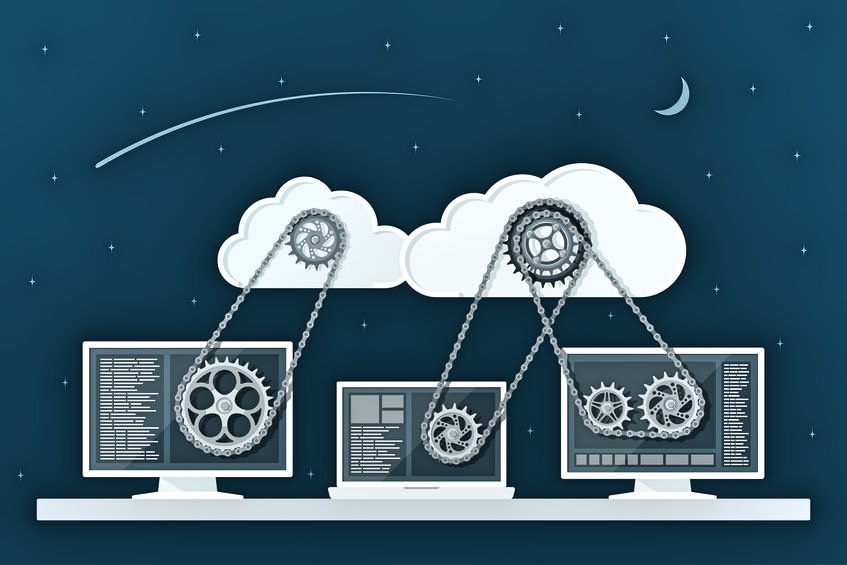India, Oct. 28, 2021 — According to the results of IBM’s new global study on cloud transformation there has been a drastic shift in business needs as only three percent of respondents reported using a single private or public cloud in 2021, down from 29 percent in 2019 – establishing hybrid cloud as the dominant IT architecture. The study shows that most organizations in India are using a varied combination of hybrid cloud architecture.
The global study, conducted by IBM Institute for Business Value (IBV) in cooperation with Oxford Economics, surveyed almost 7,200 C-suite executives across 28 industries and 47 countries including 287 executives from India. The findings indicate that the cloud market has entered the hybrid, multicloud era and concerns around vendor lock-in, security, compliance and interoperability remain paramount. The study found:
Cyber threats are at an all-time high
- Infrastructure complexity is creating cracked doors that cybercriminals are exploiting.
- Yet, surprisingly more than a third of respondents did not indicate improving cybersecurity and reducing security risks are among their largest business and IT investments.
- At the same time, 80 percent of global & India respondents said data security being embedded throughout the cloud architecture is important or extremely important, in most cases, to successful digital initiatives.
- Security concerns posed as a significant obstacle to improving business performance in some, most or all parts of their cloud estate for 54% of respondents in India.
Companies are denouncing vendor lock in and require interoperability and portability between environments
- Nearly 79 percent of global respondents and 71% of India respondents said workloads being completely portable with no vendor lock-in is important or extremely important to the success of their digital initiatives.
- Nearly 69 percent of global respondents and 68 percent of India respondents said vendor lock-in is a significant obstacle to improving business performance in most or all parts of their cloud estate.
- While in India, 63% of respondents said lack of interoperability among clouds is a significant obstacle to improving business performance in some, most or all parts of their cloud estate.
- Nearly 64 percent of respondents in India said workloads being completely portable, where developers can build, run and move workloads across private and public clouds, is important or extremely important for the success of their digital initiatives.
- In India, 74% of the respondents highlighted that the ability to run Governance and compliance tools across multiple clouds is important or extremely important to the success of their digital initiatives.
“In the beginning of their cloud journey, many companies dabbled with several different clouds that created complexity and disconnected piece parts, potentially opening them up to major security threats,” said Howard Boville, Head of IBM Cloud Platform. “Today’s finding reiterate that security, governance and compliance tools must run across multiple clouds and be embedded throughout hybrid cloud architectures from the onset for digital transformations to be successful.”
Sandip Patel, Managing Director, IBM India said, “As organizations progress on their journey to the cloud, adopting Hybrid, multicloud has become essential and is a clear winner in the race to become the dominant architecture for enterprise cloud estates in India. We are witnessing Indian organizations experience enterprise-scale improvements by harnessing the power of a Hybrid cloud architecture to digitize their existing products and services, enhance customer experience, increase business resiliency and reduce security risks.”
Also see:
APJ Businesses Opt for Hybrid and Multi-Cloud Environments
The study revealed that enterprises need to assess how they use the cloud in terms of adoption, velocity, migration, speed, and cost savings opportunity. Other recommendations include:
- Focus on security and privacy – determine where your critical workloads reside and scrutinize who and what has access to them. Regularly test that security controls and privacy policies are being adhered to, but also that improperly configured assets and software vulnerabilities are being promptly addressed.
- Ask which workloads should move to the cloud – take inventory of the IT environment to successfully determine which workloads and applications will yield the most value in the cloud and which are better suited to stay on-premises.
- Make data work for you – analyze workloads using AI driven tools and best practices to determine where and how to put them in the right place for the right reason.
- Set a tactical approach – address the technology trade-offs, such as selecting the best approach to modernize specific applications and manage important issues like security, governance, and disaster recovery.
- Determine the right team – put a cross-disciplinary team of people to work rethinking how your enterprise creates value for its customers.
Additionally, another recent study by the IBM Institute for Business Value,‘Unlock the business value of hybrid cloud’ further revealed that:
- The revenue impact of cloud investments for Indian companies can be amplified up to 13 times when orchestrated as an end-to-end reinvention of the enterprise.
- Open and extended organization and culture amplify revenue impact on cloud by almost 3X for Indian organizations. In addition, 4 of 5 Indian executives highlighted that drawing ecosystems closer together is a key strategic driver for establishing a hybrid cloud.
- The ability to move data and have an appropriate data governance in place is crucial. Advanced cloud adopters in India with more sophisticated data capabilities gained 56% revenue growth rate premium over other advanced cloud adopters.
Access the full study findings here: https://www.ibm.com/thought-leadership/institute-business-value/report/cloud-transformation









